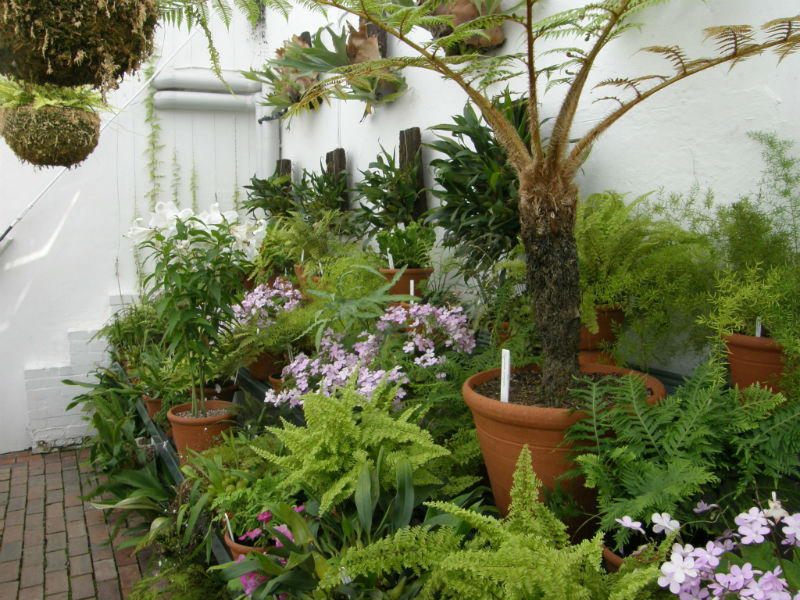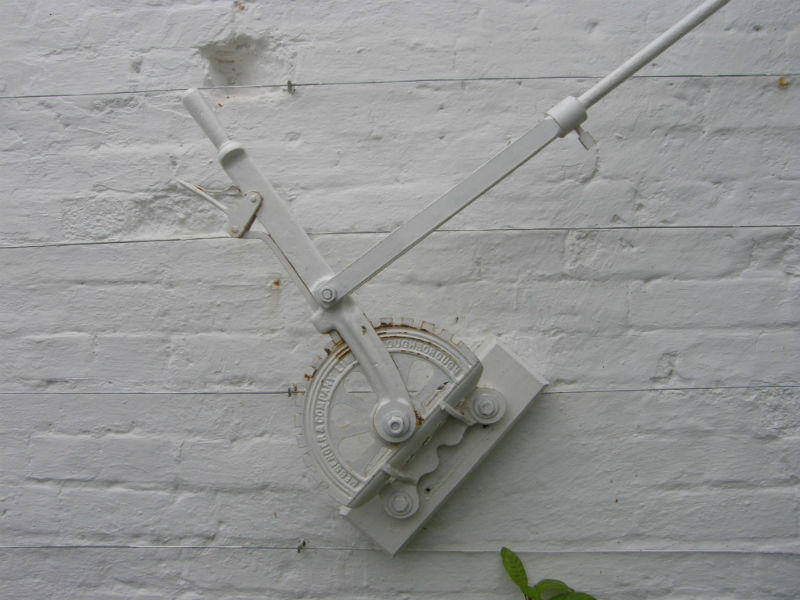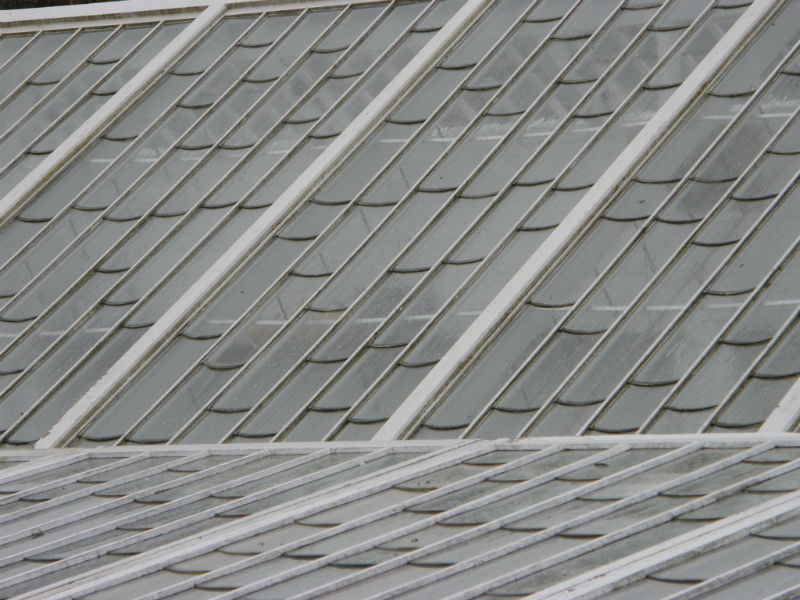 I have been to West Dean Gardens in Sussex before but a long while ago and I didn’t remember the glasshouses or cutting garden particularly. This Monday the sun shone, the greenhouses stood to attention, neat and tidy, spic and span. There’s obviously care and pride at work here.
I have been to West Dean Gardens in Sussex before but a long while ago and I didn’t remember the glasshouses or cutting garden particularly. This Monday the sun shone, the greenhouses stood to attention, neat and tidy, spic and span. There’s obviously care and pride at work here.
Glasshouses were filled with an abundance of tender bedding plants, the Cuphea ‘Tiny Mice’ in particular absolutely humming with bees.
So very jealous of the melon house with it’s (handcrafted?) twine nets cupping each voluptuous melon. My little Cantalun melon has been in since May and no set at all – leave it to the professionals!

On the cooler kitchen garden walls, glasshouses were packed with an abundance of fuchsias, ferns, heliotrope and streptocarpus. We liked the play with the mounted Stag’s Horn Ferns on the wall, plant hunters trophies rather than big game.
I’ve always had a hankering for Victorian/Edwardian glasshouses; the slight clank as you tread the solid fancy metal floor grates, random ferns poking through, escaped Mind Your Own Business (Soleirolia soleirolii) furtively colonising cracks and crevices, gargantuan heating pipes, the atmosphere heavy with moisture and above all that distinctive smell of earthy green dampness.
The maintenance on the old wooden and metal structures is never ending, apparently the painting work is on a 4 year rotation.

Foster and Pearson from Beeston in Nottinghamshire seem to have been responsible for making most of the greenhouses and cold frames but a Loughborough engineering firm had a hand in it too. This is a mechanism for opening the vents in one of the cooler houses.
West Dean is well known for its Chilli Fiesta of which there were many, many examples, but we took a tomato picture instead. A far cry from the chaotic tumble of tomatoes in my own greenhouse.

A note about the greenhouse makers
When you look into the history of Foster and Pearson they were also responsible for the greenhouses at Heligan and many other big country houses. The original company was founded around 1841 through a collaboration between a local nurseryman Robert Pearson and joiner Robert Foster. Eventually part of the business morphed into the Beeston Boiler Co which finally closed in 1985.
The Loughborough greenhouse purveyor was Messenger and Company Ltd set up in 1858 by a plumber/glazier. According to Fiona Grant in her book Glasshouses, Messenger soon grew to rival Foster and Pearson. The company was subsequently bought by Walter Burder in 1874. As the demand for high-end glass housery, melon pits et al, declined after the First World War they became a heating and general engineering company also finally closing their doors in the 1980’s.
There is now a company trading in Sussex as Foster & Pearson providing bespoke greenhouses made to traditional standards. If I win the lottery – walled garden with greenhouses here I come! Until then I’ll make-do with my slightly battered Eden aluminium jobbie.

The distinctive fishscale glazing at West Dean is apparently called beaver-tailed, the panes are rounded at one end to channel water away from wooden glazing bars to prevent rotting.
Armed with all this new knowledge (thank you West Dean visit), I shall now hone my greenhouse spotting skills on future garden visits.
Sources:
Derelict Places (pictures of the now dilapidated Messenger Factory)
Building Conservation – Robert Jameson
Glasshouses (2013) Fiona Grant
Alitex blog Sarah Wain (2013): How they keep the glasshouses – tip-top and pest free
